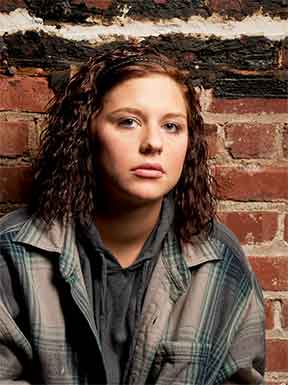 |
Previous Issues |
| Cedar Mill Community Website |
|
Search the Cedar Mill News: |
About The Cedar Mill News |
|
|||||||
| Volume 12, Issue 11 | November 2014 |
||||||
A Place to Call Home
|
|||
 |
A home, family, friends, food—a familiar list of things for which we express gratitude at this time of year, but for many children in our community, these are dreams rather than a reality.
According to the Oregon Department of Education, the number of homeless youth in our state has doubled over the past decade, holding steady at around 20,000 for the past few years. This number has increased at pace with unemployment and housing foreclosure rates. In the Beaverton School District alone, 1300 students were homeless during the 2013/2014 school year. High school seniors accounted for the largest portion of this group with 204 students.
Homelessness takes many forms, from living out of a car, to a shelter, to a shared housing situation. With just one youth shelter in all of Washington County, and a population of homeless youth equal to that of one of Beaverton’s large middle schools, how does one address this crisis?
In May, 2010, Second Home was launched as a part of the solution. Lisa Mentesana, the homeless liaison for the Beaverton School District, approached Ecumenical Ministries of Oregon in search of partnership. Modeled after EM’s Shared Housing program for homeless adults, Second Home connects homeless youth with a safe place to live. “It’s designed as a very holistic, grass roots, community-based program,” says Mentesana, “giving our community the opportunity to help our young people and become part of the solution.”
How It Works
In addition to Mentesana, teachers, counselors, church members and business people all refer homeless students to Second Home. The students need to be at least 16, drug and alcohol free and have the intention of finishing high school. Beverly Woolf, program manager of Second Home, interviews people who are interested in providing a safe room and food for these students. She says that she’s had empty nesters, singles, young couples and elderly couples participate in the program. While there is no stipend provided for families, some students agree to help out around the home as a kind of rent.
“The thing that really makes this program unique,” says Woolf, “is that it is built on a rental contract. At 16, according to Oregon law, kids can make their own decisions about their housing.” The final piece in this partnership puzzle fits in here. The Beaverton Dispute Resolution Center, housed in the Mayor’s Office, provides mediators to facilitate this unique relationship. A trained family mediator from the center sits down with the student and family to discuss expectations and rules, establish a rental agreement and address any anticipated issues. The family and the student negotiate the terms of their relationship. While one student may want to primarily focus on her studies without worrying about housing, another student may want to have dinner with her family and really participate in the household, explains Woolf. Through this dialog, students can maintain autonomy and play an active role in their futures. Upon graduation, the student and family revisit their agreement and decide where to go from there. Woolf explains that a kind of mentoring relationship often develops between family and student.
“Mediators love working with Second Home,” says Jim Brooks, program manager of the center, “because it’s such an uplifting, positive approach to a relationship.” He says that participants very rarely come back for mediation, but the center is always available to assist. After that initial meeting, Second home checks in at 30 days and a mediator checks in at 60 days.
Since its inception, volunteers through Second Home have given 28 BSD students the security that only a stable home can afford.
How to Help
In the first two months of this school year, according to Mentesana, 123 high school seniors have been identified as homeless. The need far surpasses the available number of families. When the match created through Second Home is successful, which is almost always the case, some family/student relationships may extend beyond high school, explains Woolf, thus creating a fresh need for homes each year.
You do not have to live in the Beaverton School District to volunteer with Second Home; the district can provide transportation to students wishing to graduate from a Beaverton school. Consider opening your home to one of these students. You can also volunteer as a member of a student support team, sending holiday and birthday cards to a student, attending high school events with them, or providing tutoring help. Contact Beverly Woolf at bwoolf@emoregon.org to become part of the solution.
![]()
Like us on Facebook for timely updates
Published monthly by Pioneer Marketing & Design
Publisher/Editor:Virginia Bruce
info@cedarmillnews.com
PO Box 91061
Portland, Oregon 97291
© 2013